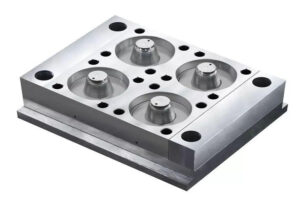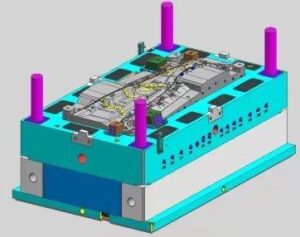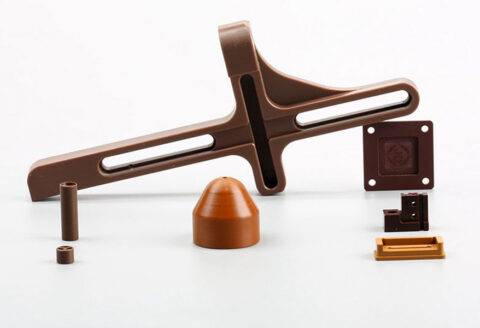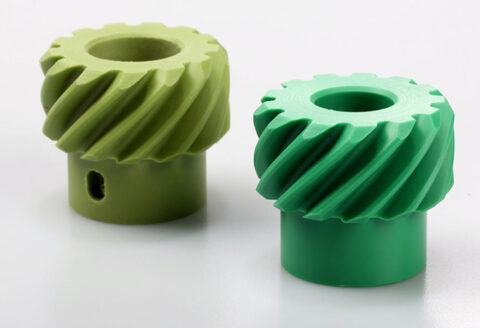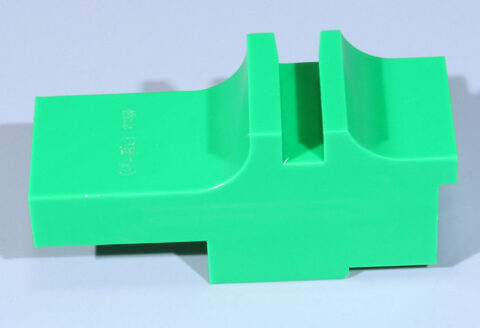As we all know, with the accumulation of the number of on-site production molds, the mold life is a gradual decline process, from the running-in of the new mold to the normal production to the end of life.
When the new mold is mass-produced in small batches, some problems may be exposed, whether the mold design is reasonable and whether the minning accuracy of the mold parts meets the product requirements, the plastic mold manufacturer will make certain adjustments to the mold. Once the mold is adjusted and the production is stable, and then many problems often appear, the probability of this will be relatively small.
As for the later stage of mold production, after a long time of high-pressure clamping and high-temperature and high-pressure impact of the melt, the mold is worn and deformed, and the qualified size and good appearance cannot be obtained. In the end, it cannot be repaired or the original accuracy cannot be achieved after the repair. The size or appearance requirements are understandable.
As a qualified mold repairer, every mold will be integrated into his world. What happened to the mold and how was it repaired? There is nothing more than him. If, as a mold repairer, you don’t have certain skills and judgment ability, then why do you play a big role in molds? So we need to master some necessary skills.
It is summarized as follows: mastering the skills of mold knowledge, mastering the skills of injection molding knowledge, mastering the skills of using measurement tools, and mastering the operating skills of mold-repairing related machines. Only by knowing ourselves and the enemy can we win every battle.
Find the problem and have the courage to find the root cause of the problem. The production site must also actively cooperate, think more together, and brainstorm together, which is conducive to the solution of the problem. If there is a problem, the on-site adjustment is not good, or if there is a problem, the mold is not good. This is wrong. What is the basis for saying that the on-site craftsmanship has not been adjusted properly? If the mold is bad, what is the basis?
There are many possible factors that can cause product defects, which requires patience to eliminate them one by one. Unless it is very intuitive, you can see at a glance where the problem is, such as a broken insert on the mold. Another example is the scorch problem of the product. This is a mold with a parting surface that has an exhaust groove and has accumulated more than 800,000 molds. Normally, poor exhaust will not occur. The on-site shooting speed is also slowed down. No way.
Remove the mother mold core and measure the exhaust port with a calibration meter. Due to frequent mold clamping production, the depth of the exhaust port on the parting surface is almost gone. Therefore, there can be no habitual thinking. The presence of exhaust on the mold does not guarantee that its exhaust is always good. It may also be that the exhaust port is blocked by plastic decomposition.
Therefore, model repairers must have a certain ability to judge, just like a case is settled. Only when the judgment is accurate will they embark on the right path. Misjudgment will cause the target to deviate from the direction and cause half the effort.
1. Skills to master mold knowledge
1. Mold structure and material
For a mold repairer, it is something you have to figure out before disassembling and assembling a pair of molds. It is related to the sequence of mold disassembly. What is a two-plate mold, what is a three-plate mold, and what is a hot runner mold. If you don’t know its structure, how do you do it? So theoretical things still need to be known. What kind of material is suitable for what occasion, this must take into account the economy and applicability of the mold.
2. The role of each part of the mold
The role of mold parts is related to the use of mold parts on the mold. Each mold part on the mold has its own meaning and does not exist for no reason. What plays a positioning role, what plays a guiding role… Think about it: if the part is missing or damaged on the mold, what will be the consequences?
3. The action sequence and principle of the mold
What action is performed first, then what, and then what is next. If the sequence of actions does not or moves together, it means that the mold has been in a bad condition. Such as the second ejection, thread demoulding mechanism, the action sequence of the slider cylinder core pulling, etc.
4. Mold drawing
If the drawing is not clear, how to repair the mold when it is damaged. Mold repair personnel must not only be able to understand the drawing, but also need to know the matching tolerances and accuracy requirements of the mold parts.
Second, master the skills of injection plastic molding mining knowledge
What are flash, scratches, flow marks, burnt, short shots, silver coins, etc., and how do they come about? How does the adjustment of the value of these process parameters such as pressure, fire rate, material temperature, holding pressure, back pressure, have any effect on product quality? Maybe you don’t know how to adjust the machine, but these mold-related processes are also knowledge you must master.
The so-called “seven parts mold, three parts process.” Explains the importance of molds. In fact, molds and processes are indispensable for producing a qualified product. Mastering the skills of injection molding knowledge is to enable repair personnel to distinguish what is caused by the mold and what is caused by improper process.
For example: the flash of the product, the repairer first thinks about whether there is pressure on the product or foreign matter in the mold, secondly whether the mold fit gap is too large (wear and surface pressure collapse deformation), and finally consider whether the injection pressure is too large, Whether the rate of fire is too fast, whether the material temperature is too high, or whether the machine’s coring column is broken, etc. (use the elimination method to eliminate one by one).
Observe the mold on the machine and compare it with the product. Confirm that it is not caused by the mold, and then notify the production site to adjust the process parameters. If the repairers themselves are not very clear about the process knowledge, they cannot explain the production site and come up with a solution. There are few personnel on the production site who understand the mold, and the mold repairer handles the mold-related matters. The rest can only be solved by the process. In the end, there is really no way that only the quality assurance personnel will come to confirm whether it is acceptable.
3. Master the skills of using measurement tools
Such as calipers, micrometers, height gauges, depth gauges, calibration meters, projectors, etc., you need to be able to use them skillfully. What measurement tools are used under what circumstances.
For example: after the mold inserts are damaged, first look for computer graphics files. Take the drawing as a reference, and the actual measurement of the intact entry on the mold is the basis for the size of the new entry. I cannot trust the drawing completely. I encountered many situations in which the drawing did not match the real object in my work. After taking the drawing as the standard, it led to errors in the processed parts. The replacement of some new parts can only be replaced after measuring and confirming with a measuring tool (if the size of the new part does not match, it needs to be reprocessed in place). Therefore, mastering the skills of using measurement tools is the most basic skill for mold repairers.
